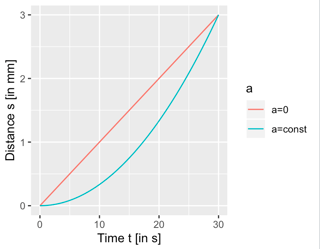Let's consider an example: Velocity is displacement per unit time, $v = ds/dt$. If the word "unit" bothers you, you can simply omit it. So, if I measure a displacement of $\Delta s=3mm$ in the time interval $\Delta t = 0.5min$ the average velocity is $\bar v = 3mm/(0.5min)$, which is equal to $3mm/30s$ or $10^{-4}m/s$. However, we do not know the velocity at time $t=30s$, because we did not specify whether the acceleration was zero or non-zero. This is shown in the following plot where both motions travel the distance fo $3mm$ in the time interval $30s$. Hence, bot motion have the same average velocity (in this particular time interval), but the final velocity at time $t=30s$ differs.

Why do we use the phrase "per unit xyz"? In my opinion this phrase emphasises that it does not matter whether we wish to use seconds, minutes or weeks as our reference time interval. What ever we choose the corresponding quantity will be a velocity. Although the same is true for the nominator, we could choose to measure the distance in units of meters, foot, or light years, I have never read "velocity is a unit of displacement per unit time". In my opinion, stuffing unnecessary words into sentences does not help to improve the readability.
The second question is about the derivatives. As you have probably learned in math the first derivative of a curve is its slope (=tangent). The slope indicates a rate of change. Hence, if we are interested in this rate of change of a continuous quantity, we will define the quantity by the derivative. However, note that above I discussed the average velocity and used $\bar v = \Delta s / \Delta t$. It would be wrong to replace the ratio by the derivative. Hence, the definition is chosen according to our needs/interest. However, luckily, we are interested most often in the velocity at a given time,
$$v(t_0) = \frac{ds}{dt}\big|_{t=t_0}
=\frac{ds(t_0)}{dt}
$$

